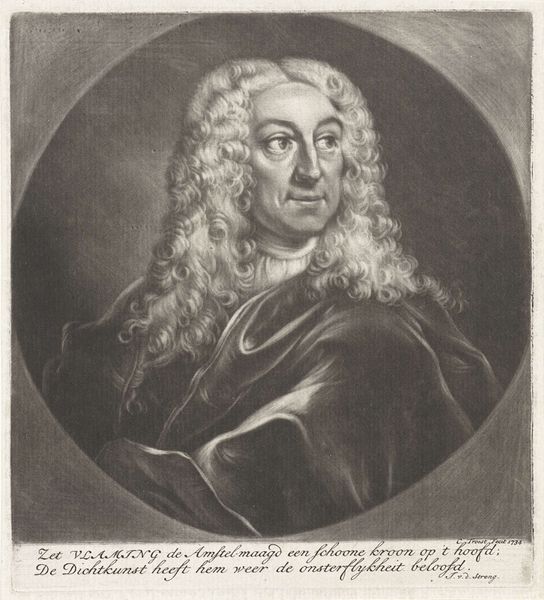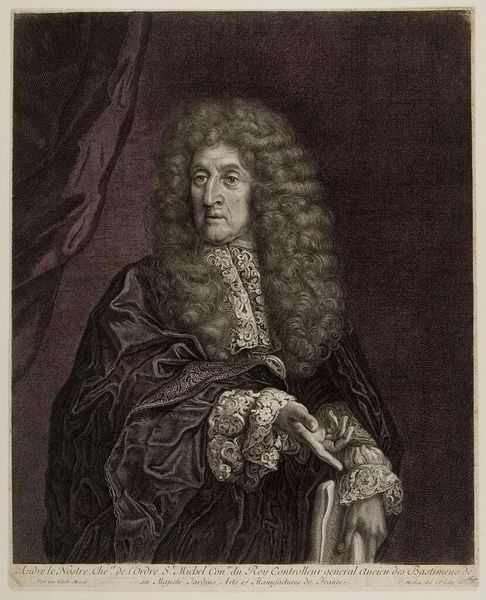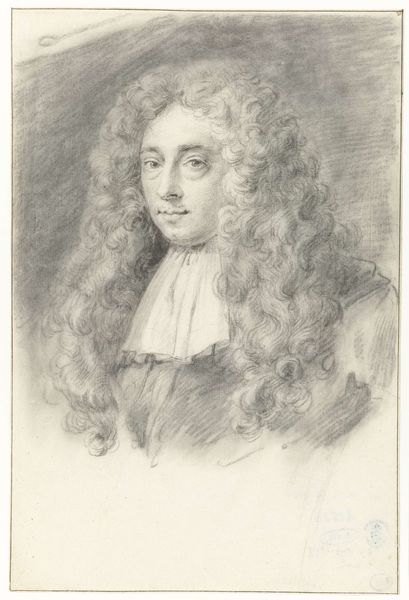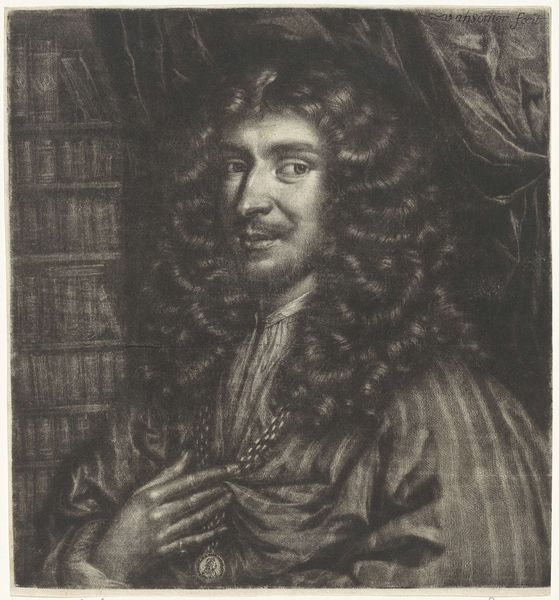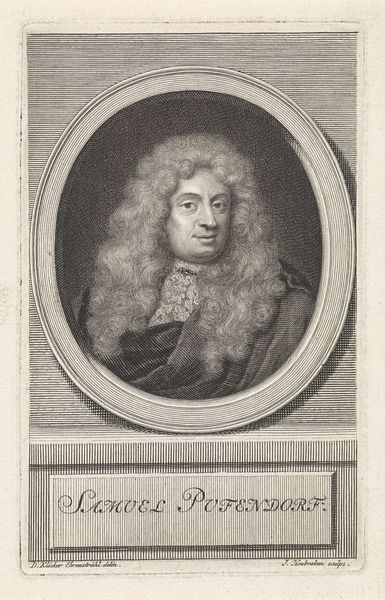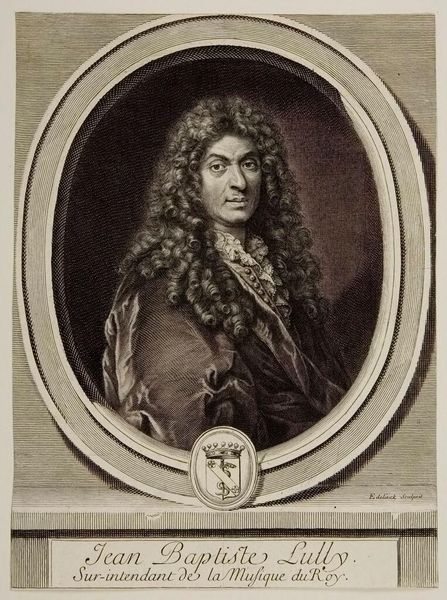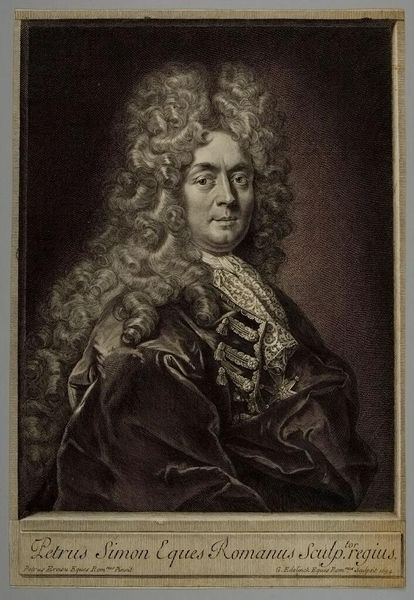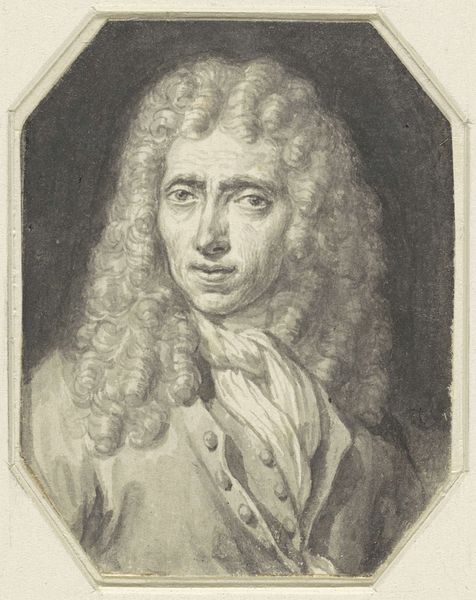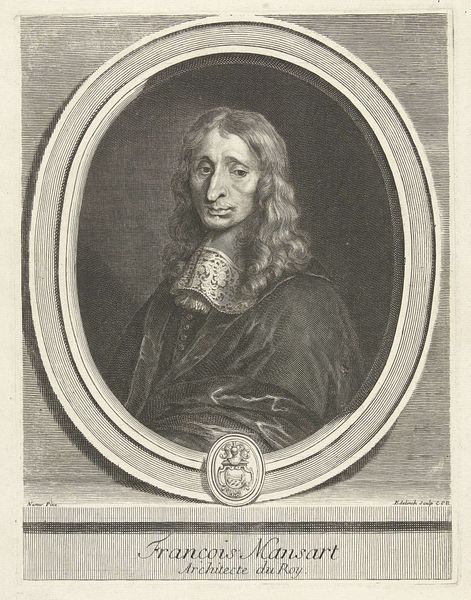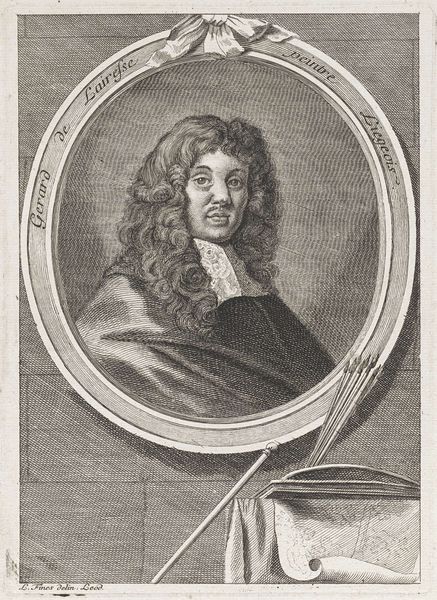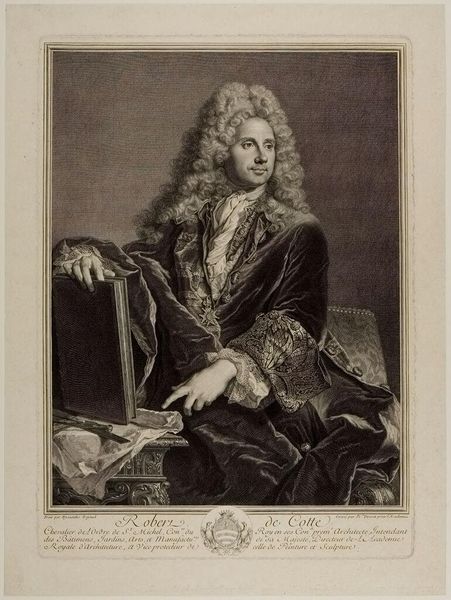
engraving
#
baroque
#
charcoal drawing
#
figuration
#
charcoal art
#
portrait reference
#
line
#
portrait drawing
#
history-painting
#
academic-art
#
engraving
Dimensions: height 189 mm, width 143 mm
Copyright: Rijks Museum: Open Domain
Curator: Here we have a piece believed to be Jan van der Bruggen's "Portret van Antoine Masson", likely made somewhere between 1659 and 1740, an engraving rendering the esteemed sculptor Antoine Masson. My immediate thought is it feels incredibly mannered, that wig! Editor: Yes, that wig certainly defines the period and hints at status. But look closely—it's all about line and light, the stark contrast. This is pure reproductive engraving intended for mass production; one of the earliest methods that disseminated visual ideas. I'm immediately drawn to that fine script below. Curator: Absolutely, those lines creating a sense of form and depth! What a marvel the engraved lettering. It also makes me wonder what Masson, the subject, thought of this image? It's a portrait, but also an object of labour made with tools etching copper, far removed from the sculptor's craft. Editor: A divergence, perhaps. Consider though, this engraver elevated Masson’s likeness, making it available across social strata. It shifts artistic reputation from purely individual to something reproducible, tied into a material, engraved image economy. What price did this fame require? What were the labor conditions, the print runs? The story hides in those etched lines. Curator: The democratization of the image! I love how this almost forces us to reconsider our definitions of craft and labor, even celebrity. Editor: It underscores that what we consider ‘high art’ is bound intimately with often invisible networks of making, distributing, and consuming images – things beyond pure individual genius. Curator: Exactly. And seeing those processes intertwined truly shapes a fuller narrative of our artistic past, revealing the interconnectedness of creation. Editor: Indeed, it reveals the tangible means through which the Baroque becomes, ironically, democratized. A moment worthy to reconsider.
Comments
No comments
Be the first to comment and join the conversation on the ultimate creative platform.
